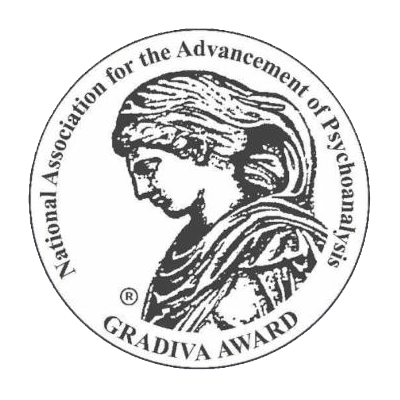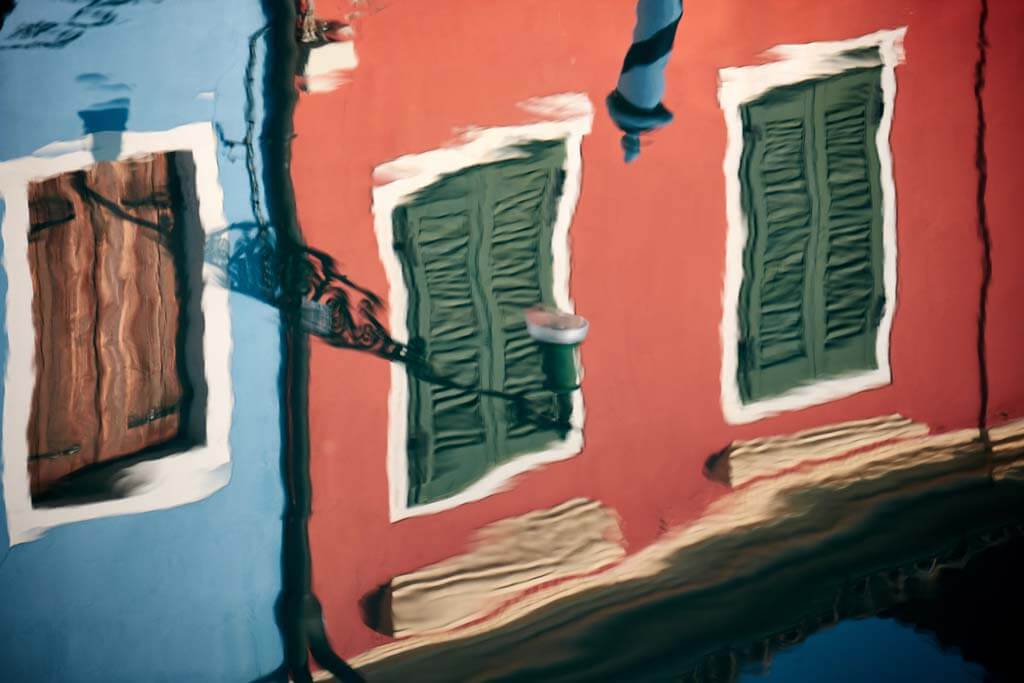Quarantine in Venice
by Luca Caldironi
“Out of darkness and formlessness something evolves.”
—W. Bion
The title of the last Venice Biennale Art exhibition was “May You Live in Interesting Times,” and the title of the next Architectural Biennale exhibition is “How Will We Live Together?” I found these two topics not only extremely interesting and provocative but also particularly pertinent to the reality we are experiencing right now. Let’s start with the first. What times are we living now?
We are experiencing what I would call a “forced awareness” of our frailty. We are “forced” by events to “force” our psychic mechanisms to defend us from approaching calamities that make us aware of our vulnerability, to examine our relationship with time as it relates to the end of life, and more generally to confront our own fears and suffering.
Very often, despite having achieved enormous successes in enhancing the quality of life, even medicine and psychiatry have not helped us keep our eyes on the murkier aspects of our collective psyches. Because of our lack of awareness or our lack of psychological tools, we willingly and quickly settle when guided by stimuli and advice from authority figures, or just trusted friends and family, hoping to comfort us with siren songs like “don’t think,” “distract yourself,” “think of something else,” etc.
But when an “other” arrives instead, we find ourselves going from a situation where we always felt omnipotent, where anything seemed possible, and where we could challenge every limit, to a situation where we suddenly find ourselves on the ground (or on a sofa at home in this case, if we are lucky!). In any case, it was not a very soft fall, not only because of the health emergency, which of course is the primary concern at the moment, but also for all the subsequent social and economic complications that have arisen and will continue to in the future.
We feel as if we woke up lost, the GPS of our life crushed. On one hand, this is a discovery of the obvious; it is experiencing a concept dear to Eastern thought known as “impermanence.” The irruption of the Real arises as a strong presence in contrast to the Virtual. There is a “catastrophe,” an “overturning” of the scene, thus the common description, “Everything is upside-down right now.”
As in Greek theater, this experience is a crucial hub of and in the tragedy itself. Because we are experiencing this Overturning on several levels, we must move from external spaces to an internal one. The interpersonal safety margins must be wider, more expanded. We must live the paradox of feeling close when facing the problem together, while physically staying apart to protect ourselves and others.
Turning now to the title of the next 2020 Architecture Biennale: “How Will We Live Together?” This title has become extremely provocative, not only because this biennale has already been postponed and we don’t know if it will open but because of the interlocution and challenge its title poses for us, right now and for our future.
Once again, we are faced with the paradox I mentioned earlier, a paradox that involves our global and globalized life in which contact or touch will increasingly need to take place tactfully and with sensitivity, and with all the attention and care of our heightened sense of responsibility.
Developing a citizenship that cuts through the individual, the community, and the environment can represent a challenge to making us feel like we’re part of something bigger than ourselves. That does not mean stepping aside but rather doing our part. Can the play of words “shared distance” be the space in which we will now live together? And how can such a major shift in thinking and action be implemented? There will be many such hows in our collective future, and each time, it will be up to us to deal with them wisely in that moment.
We are living the paradox of simultaneously needing mutual social assistance and being required to distance ourselves from each other. A sense of greater social responsibility has been born in all of us from this catastrophe, which is not and cannot be only individual, and though we are necessarily apart, it is a collective experience.
Forced isolation or coexistence in the same space has several definitions—these include the relationship everyone has with themselves (self-talk), the condition of their mental space, and the unique internal struggles they are experiencing.
I think of our minds as labyrinths we all must enter and from which we inevitably emerge transformed. In the labyrinth, we will encounter horrors, the fears we are able to ignore in the bright world outside, but that find us in times of fear or heightened anxiety. In ancient mythology, these fears took the form of monsters such as the minotaur. Since the journey into the labyrinth is psychological, not actual, the minotaur is of course symbolic. That is, it represents something else within our own psyches. In today’s world, it might be this virus we’re all hiding from, or the monstrum, as the Latins called it. The monster can take many forms.
In the labyrinth, we may also have an encounter with ourselves. Can that moment become one in which fear does not become panic, anxiety does not become anguish, worry does not become depression, and restrictions do not become persecutory experiences?
When experiencing a feeling of impotence because of a formidable enemy, whether visible or invisible, man has always developed some form of collective aggregation to ensure his survival. But we also know that these forms themselves can be affected by destructive phenomena. It is a very delicate balance.
If COVID-19 is a phenomenon of the globalized world, I believe that the globalized world is also the resource for fighting its “dark side.” In this sense, the COVID-19 virus can then represent the “negative” (in the sense of old film cameras), which can help us understand what is going on. In a wider sense, it can also help us understand globalization itself and develop a more noble component of or from it.
Might all humanity use the immense power of our imaginations to illuminate a myopic, anthropocentric point of view and give more space to creativity as a way of “listening”—to rethink not only globalization but the idea of nature, both of which humanity is completely, intricately, and unavoidably a part of.
We must enter our own labyrinths to face this pain and try to handle it in the more three-dimensional and deeper space of suffering. In ancient Greece, there was a saying: To pathei mathos—wisdom is achieved through suffering. In other words, transformation can only take place when the pain is felt, not denied.
Even the word suffering and the verb to suffer take us back to an internal space. The word suffering, which is closer in meaning to the ancient Greek word pathos, but is derived from the Latin suf-ferre, meaning “to put or take something inside,” with the consequent implication of a passage from a superficial dimension to a deeper emotional space.
All this refers us to an ontological problem, one of life or death. In the broadest respect, it is the relationship that each of us has with our own finitude. This thought sounds depressive on the surface, but it is anything but, because it goes to the core of everything that makes life a unique opportunity for joy and creativity, and it takes us to a place where all our feelings and emotions can converge.
Bion wrote, “The incapacity to build a mental space that tolerates ignorance or uncertainty induces the creation of a language of action, from where power can be exercised arbitrarily… The capacity of the mind depends on the capacity of the unconscious-negative capability. Inability to tolerate empty space limits the amount of space available.”
But why talk about all this?
Perhaps precisely because we are realizing that despite the cacophony of expert voices, no one really has all the right answers or can predict the future with certainty. And perhaps we are also a little tired of behavioral decalogues that look more like “presumed knowledge” to us, and what we really need is for a few of the experts to be honest and admit to common feelings of fear and uncertainty about what is going on, so that we can feel less alone in our fear. ■
-
Luca Caldironi, an Italian-licensed MD and clinical psychiatrist, is a member of the Italian Society of Psychoanalysis (SPI), and he also holds memberships in American Psychoanalytic Association, Chartered Institute of Procurement & Supply, and International Psychoanalytical Association. He is a professor at the Martha Harris School of Psychoanalytic Psychotherapy in Bologna, Italy, and he has been a lecturer at Padova University, Department of Philosophy, Sociology, Pedagogy and Applied Psychology (FISPPA). His numerous publications and presentations reflect an emphasis on Bionian thought, especially around the concept of creativity, which he incorporates as director of the Venetian art exhibition space Castello925. He has a private practice in both Modena and Venice and individual and group consultations in New York. Over time, he increasingly felt the need to use the knowledge he gained through his clinical work in other fields, especially the artistic and the creative ones. From this he established the K-Now-L-Edge Project, which is devoted to the study of creativity and its development not only in clinical work but also between art and psychoanalysis.
- Email: luca.caldironi@gmail.com
ROOM is entirely dependent upon reader support. Please consider helping ROOM today with a tax-deductible donation. Any amount is deeply appreciated. |





